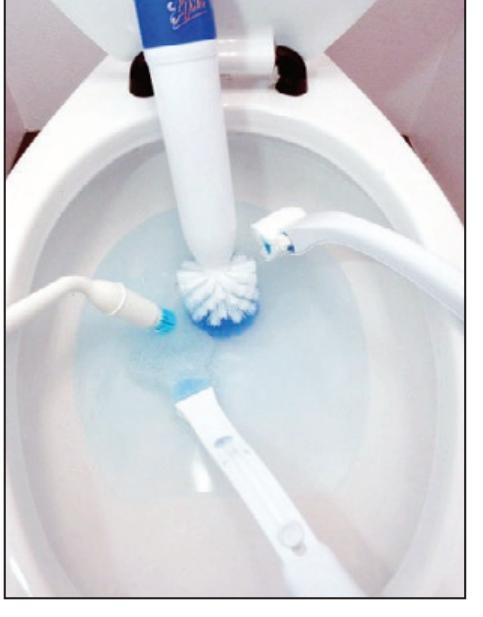You keep a pretty clean home. Sure, sometimes your rigid cleaning schedule has to bend here and there to accommodate life, but your house/apartment/condo stays pretty darn tidy.
You clean all the usual suspects: kitchen sinks, counters and floors. Bathroom countertop, toilets, showers. You vacuum the carpets, dust the furniture, and maybe even hit the blinds and curtains now and then.
Good to go? Maybe, maybe not. There's a host of everyday objects and high-use home appliances that may get overlooked during cleaning jags.
Such ommissions may not have many obvious repercussions, but they can cost you in terms of appliance and electronic performance, allergy attacks and general hygiene.
So go ahead. Grab a bucket, a can of compressed air and some cleanser. Roll up your sleeves and get ready to expand that household chore list by a couple of items this weekend.
TOILET BRUSHES
- Difficulty: Minimal. Some grossness factor, though.
You religiously clean your toilet, because, y'know, ewww. But do you make sure to clean the mechanism that cleans the toilet?
"Your toilet brush should be cleaned every time you use it," cautions Shana Cowart, area district customer service trainer with Bed Bath & Beyond. "Rinse it after every use and replace the head when needed."
Not doing so could mean growing a little Petri dish of germs in the corner of your bathroom.
Cowart doesn't recommend doing anything extreme. "Just rinse it after every use. If you feel like it's still not clean, pour some bleach on it."
If the brush has replacement heads, all the better. Replace periodically when it's showing a bit of wear and tear, she said. And if it doesn't have replacement heads, consider going with a new brush whenever ol' reliable starts looking a little tattered.
CEILING AND ATTIC FANS
- Difficulty: Varies, from rather simple to a little bit complex.
Fans pose a little bit more of a challenge than toilet brushes because they're quite a bit less accessible.
That being said, "if you stay on top of keeping ceiling and attic fans clean, it's a pretty easy process," says Bryan Dunning, assistant store manager of the Lowe's in Gladstone, Mo.
Ceiling fans are rather simple, though you may need a long duster or stepladder to really get the job done ("with a vaulted ceiling, it may not be as feasible," Dunning said).
The key is dedication. Hit the ceiling fan blades with disposable dusting pads every couple of weeks, and you should be fine. Naturally, if you wait significant stretches between cleanings, expect a lot of dust falloff when you finally do get around to it. For $3 a pack, you could also invest in a filter that sits on top of the blade, but cleaning is still recommended, Dunning said.
Attic fans are a bit trickier. "Step 1 is to definitely make sure you have your breaker turned off. Since the switch is usually below the fan, you don't want to be near one when someone turns it on," Dunning said. "They can put out a lot of power."
Cleaning attic fans is fairly similar to ceiling units.
"You can use a mild cleaning solution and wipe off the metal blades," Dunning said. "And with the motor, you can use a can of compressed air to clean out any dust and dirt in the motor."
Dunning suggests syncing attic fan cleaning with your furnace filter changing schedule.
Cleaning both kinds of fans gives the same benefit: less debris in the air and a longer appliance life span. Dunning also notes that dirty and dusty motors run hotter, meaning less efficient cooling.
"If you work these things into your cleaning routine, you should be fine," he said. "It's like preventative medicine. It heads off problems down the road."
REFRIGERATOR ICEMAKER
- Difficulty: Involved. Varies with model.
Dust isn't likely to be a significant issue with your refrigerator icemaker, but other concerns may arise.
"If you look at your ice, and it's getting discoloured, that's a sign that it's a good idea to clean your icemaker," Lowe's Dunning said.
First, check your owner's manual for step-bystep guides.
Typically, Dunning said, it will involve turning off the ice maker and shutting off the water to the water line. You'll probably have to let the water run through, then use a mild detergent to clean the line. A mild detergent solution can also be used on the various parts of the ice maker.



